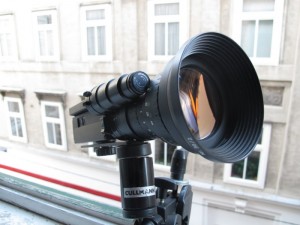December 21, 2010
by Andrey Filippov
UPDATE: The latest version of the page for comparing the results.
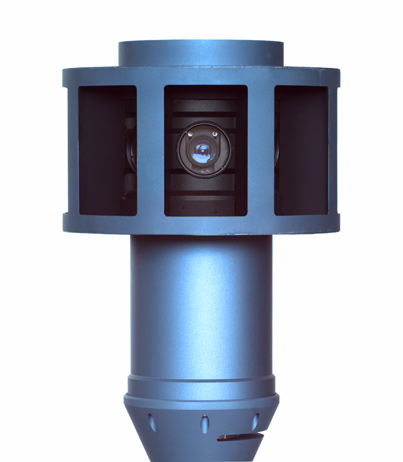 This is a quick update to the Zoom in. Now… enhance. – a practical implementation of the aberration measurement and correction in a digital camera post published last month. It had many illustrations of the image post-processing steps, but lacked the most important the real-life examples of the processed images. At that time we just did not have such images, we also had to find out a way to acquire calibration images at the distance that can be considered “infinity” for the lenses – the first images used a shorter distance of just 2.25m between the camera and the target, the target size was limited by the size of our office wall. Since that we improved software combining of the partial calibration images, software was converted to multi-threaded to increase performance (using all the 8 threads in the 4-core Intel i7 CPU resulted in approximately 5.5 times faster processing) and we were able to calibrate the two actual Elphel Eyesis cameras (only 8 lenses around, top fisheye is not done yet). It was possible to apply recent calibration data (here is a set of calibration files for one of the 8 channels) to the images we acquired before the software was finished. (more…)
This is a quick update to the Zoom in. Now… enhance. – a practical implementation of the aberration measurement and correction in a digital camera post published last month. It had many illustrations of the image post-processing steps, but lacked the most important the real-life examples of the processed images. At that time we just did not have such images, we also had to find out a way to acquire calibration images at the distance that can be considered “infinity” for the lenses – the first images used a shorter distance of just 2.25m between the camera and the target, the target size was limited by the size of our office wall. Since that we improved software combining of the partial calibration images, software was converted to multi-threaded to increase performance (using all the 8 threads in the 4-core Intel i7 CPU resulted in approximately 5.5 times faster processing) and we were able to calibrate the two actual Elphel Eyesis cameras (only 8 lenses around, top fisheye is not done yet). It was possible to apply recent calibration data (here is a set of calibration files for one of the 8 channels) to the images we acquired before the software was finished. (more…)
November 30, 2010
by M@sh
In my search for an affordable and reasonable solution of creating high-res panoramic river views I came along the Elphel camera and it’s photo-finish mode. As part of my ongoing projects Danube Panorama Project, Nile Studies and the new umbrella project River Studies, I am capturing virtually endless panoramic river views from a moving vessels with a slit- or line-scan method. I was using webcams or DV-cameras before, and all possible ways to upgrade to higher resolutions either seemed clumsy (I don’t want to be loaded with much more than a tiny laptop or tablet and the camera itself), very processing intense and/or expensive and far out of reach of my (very limited) budget.
The “all-purpose camera” Elphel stepped in as a good, reasonable and flexible solution for that task. The first season using an Elphel353 is over, so time to share some of my experiences with Elphel and it’s not so well know photo-finish mode for line-scanning.
(more…)
November 18, 2010
by Andrey Filippov
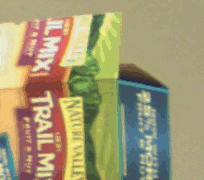
Deconvolved vs. de-mosaiced original
(more…)
November 6, 2010
by Andrey Filippov
We were assembling four of the nc353_369_hdd camera kits with internal 1.8″ HDD. Unfortunately, when we assembled them – none worked, on the serial console output we could see unhandled interrupts leading to kernel panic when we just tried to format the disk. And the same on all of the 4 cameras, all of the 4 disks, so that could not be a problem with the particular board or device.
Yes, the disks we purchased – 120GB Toshiba MK1231GAL were new for us – we never used them before, but those that we tested earlier were not available. So we looked at the specs and concluded that they should work – same PATA, same ZIF connectors.
(more…)
October 27, 2010
by Stefan de Konink
I have made some progress to integrate OpenLayers with EyesisPlayer resulting in EyesisMaps. Marek has added some Javascript callbacks to EyesisPlayer to allow features on OpenLayers to be updated and visa versa. So we gained a moveable arrow and interface directly with a PostgreSQL database via FeatureServer.
While still polishing it; but you can see the sneak preview:
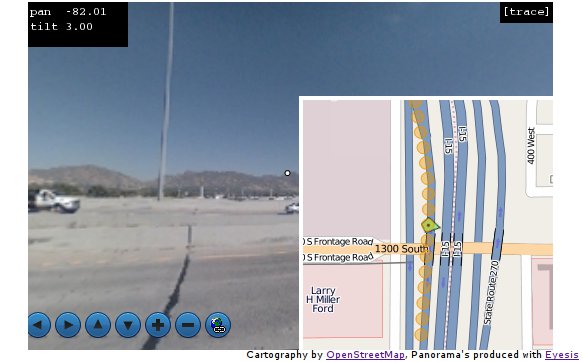
October 5, 2010
by Olga Filippova

Elphel will participate in the UTOSC, October 7-9, 2010, with a presentation on October 8, at 11:30 am.
Free and Open Source software is still more common then Open Hardware and we would like to discuss our experience in designing and manufacturing high performance network digital cameras and the benefits of Open Hardware development.
In our presentation we will talk about:
- Benefits of being Open Hardware company from the business point of view.
- Pros and cons of developing a High Performance Open Hardware.
- Camera as a development platform. Easy customizable software (HTML, JavaScript, PHP) and firmware (Verilog HDL) allows modifying cameras to specific applications.
- Reconfigurable nature of hardware designed as a set of high-performance building blocks ready for a variety of configurations.
- Examples of applications.
- Future developements.
- Collaboration with Open Source community.
Please come join us for presentation and in our booth at UTOSC
October 4, 2010
by Olga Filippova
On October 2, 2010 Elphel had participated (remotely) in Russian Open-Source Hardware /mini-conference/ that took place in Saint-Petersburg. Full list of the projects presented are published in Russian
We were also invited and talked about the benefits of Open Hardware for our business, that we have experienced over the 9 years of existence.
The slides from the conference are available on the slideshare site of conference organizer, Alexander Chemeris
We participated over the phone, after an unsuccessful attempt to do video via Ekiga (did not have time to set it up properly), and we don’t use Skype; but at least the sound quality was good. We also had the pleasure to see other presentations, live, on the upstream.tv most of them in Russian, and some in English, like presentation from Arduino and Bruce Perens.
The presentations were very informative and we hope they will be uploaded on upstream.tv since we were getting ready to our talk and could only glance at the others.
August 31, 2010
by Stefan de Konink
Today I created a tiny bit of OpenLayers code for the Eyesis display page. It is basically a demo what you can do by playing points of interest on a map. Displaying the panorama and a smaller map.
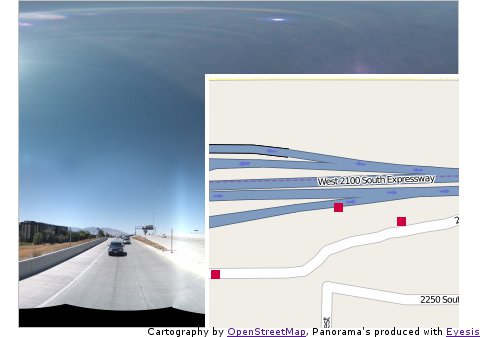
Currently I did not add a panorama player yet. But since it is only a matter of changing div’s that could be done easily. Personally I would like to go for a HTML5 kind of player, since for most browsers that would be the least resource intensive way of displaying. The code is available at http://eyesis.openstreetphoto.org/ there are some images there but only lowres from the initial stichting tryouts.
August 14, 2010
by Stefan de Konink
Tonight I was thinking about what the possibilities are for the driver to actually see what he is shooting and at the same time facilitate appliances such as traveling salesman routing for the fastest shooting experience. I have some other ideas for the ‘main’ screen such as a 2D map with trails where the car has been (or where photo’s were taken). It seems a logical decision to even incorporate a menu to start or stop shooting or see data statistics as well.
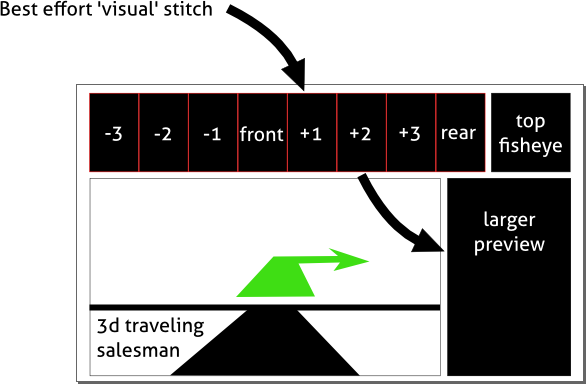
I would like to encourage others to come up with other appliances that could be ‘nice’ to have while drive and shooting. Let me give shot: ‘cute girl tag’-button.
August 4, 2010
by David
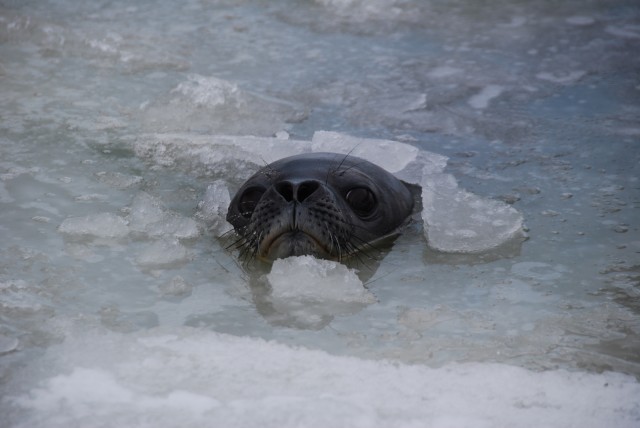
The Submersible Capable of under-Ice Navigation and Imaging (SCINI) is an underwater remotely operated vehicle (ROV) designed to facilitate oceanographic science research in extreme polar environments. The project was part of a three year grant, starting in 2007, from the National Science Foundation aiming to develop a cost-effective research tool that can be easily deployed through a 20cm hole in the ice. Over the past three austral summers, field teams led by benthic ecologist Dr. Stacy Kim and SCINI inventor Bob Zook, took the ROV into the cold southern waters surrounding McMurdo Station, Antarctica to capture video from parts of the natural world that have never been seen before.
(more…)
« Previous Page —
Next Page »
 This is a quick update to the Zoom in. Now… enhance. – a practical implementation of the aberration measurement and correction in a digital camera post published last month. It had many illustrations of the image post-processing steps, but lacked the most important the real-life examples of the processed images. At that time we just did not have such images, we also had to find out a way to acquire calibration images at the distance that can be considered “infinity” for the lenses – the first images used a shorter distance of just 2.25m between the camera and the target, the target size was limited by the size of our office wall. Since that we improved software combining of the partial calibration images, software was converted to multi-threaded to increase performance (using all the 8 threads in the 4-core Intel i7 CPU resulted in approximately 5.5 times faster processing) and we were able to calibrate the two actual Elphel Eyesis cameras (only 8 lenses around, top fisheye is not done yet). It was possible to apply recent calibration data (here is a set of calibration files for one of the 8 channels) to the images we acquired before the software was finished. (more…)
This is a quick update to the Zoom in. Now… enhance. – a practical implementation of the aberration measurement and correction in a digital camera post published last month. It had many illustrations of the image post-processing steps, but lacked the most important the real-life examples of the processed images. At that time we just did not have such images, we also had to find out a way to acquire calibration images at the distance that can be considered “infinity” for the lenses – the first images used a shorter distance of just 2.25m between the camera and the target, the target size was limited by the size of our office wall. Since that we improved software combining of the partial calibration images, software was converted to multi-threaded to increase performance (using all the 8 threads in the 4-core Intel i7 CPU resulted in approximately 5.5 times faster processing) and we were able to calibrate the two actual Elphel Eyesis cameras (only 8 lenses around, top fisheye is not done yet). It was possible to apply recent calibration data (here is a set of calibration files for one of the 8 channels) to the images we acquired before the software was finished. (more…)